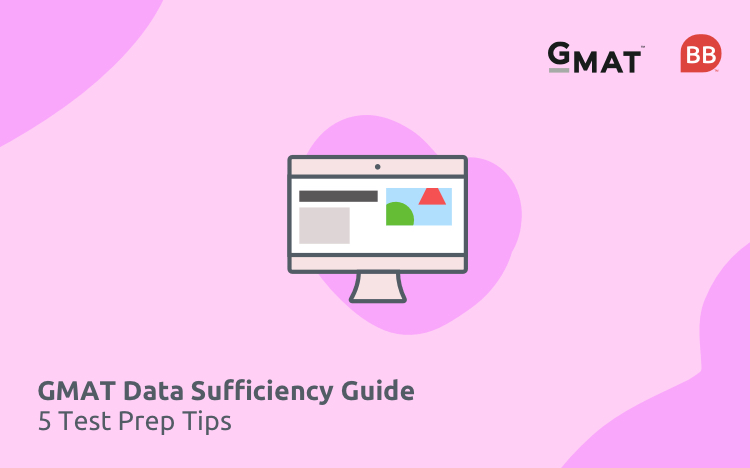For those starting their test prep, to those struggling with getting a grip on questions, we bring you our five top tips on how to approach and solve GMAT data sufficiency questions.
Check out our BusinessBecause video guide below, made with help from the Official GMAT.
Check out our GMAT question guides:
Our five tips for GMAT data sufficiency
1. Don't waste your time solving the problem
Data sufficiency questions aren't about giving the solution the problem, they're about determining whether there is enough information for you to be able to answer the question. Don't start by solving the problem.
2. Memorize the answer choices
In data sufficiency questions, the five answer choices are always the same. Memorizing these will speed up your response.
3. Consider each statement separately
Look at each statement, and see if it gives you enough information alone.
4. Make sure the solution answers the question that is asked
Be sure that the answer is sufficient to the question.
5. Brush up on your math
As with many quantitative questions on the GMAT, having a good grasp of mental math will speed up your response.
WATCH THE VIDEO
FULL TRANSCRIPT BELOW
Data Sufficiency is an important part of quantitative reasoning on the GMAT, and measures your ability to analyse problems.
You are presented with a question, and two statements. You have to analyse all of the information presented in the statements, and decide if you have enough data in order to answer the question.
In this BusinessBecause Guide, and with the help of the Official GMAT appears, we bring you some handy tips for preparing for and approaching data sufficiency.
1. Don’t waste time solving the problem
It sounds like confusing advice, but data sufficiency questions aren’t about solving the problem.
They are about analyzing and understanding whether you are able to solve the problem given the information available.
It’s less about “Find the answer”, and more about “Are you able to find the answer”.
Take this very simple problem.
[Show up on screen]
Question: Is x > 8?
The sky is blue
x = 4
It’s obvious here that x is less than 8, but all that matters is that you are given the right amount of information to come to this conclusion.
2. Memorize the answer choices
In data sufficiency questions, the answer choices are always the same. You have a multiple choice with five options, stating the extent to which you’re able to answer the question.
[on screen]
Statement 1 alone is sufficient but statement 2 alone is not sufficient to answer the question asked.
Statement 2 alone is sufficient but statement 1 alone is not sufficient to answer the question asked.
Both statements 1 and 2 together are sufficient to answer the question but neither statement is sufficient alone.
Each statement alone is sufficient to answer the question.
Statements 1 and 2 are not sufficient to answer the question asked and additional data is needed to answer the statements.
This will help you analyze and answer the problem much more quickly.
3. Consider each statement separately
Look at each statement by itself, disregarding the other statement. Think about whether one statement alone will satisfy your ability to answer the question?
If neither satisfies the question separately, look at them in tandem. Does one tell you something about the other that helps you answer the question?
4. Make sure the solution answers the question that’s asked
It’s crucial to double check that your solution matches the problem that’s being posed.
For example, if the question is asking for a single value, such as ‘What is the value of x’, determining the maximum and minimum values is not sufficient.
5. Brush up on your math
The time pressure of the GMAT demands that you think quickly.
The math you’ll need to answer quantitative questions won’t be complex, but you won’t get a calculator to do quick sums. It’s worth brushing up on your fundamentals so you can do the simple stuff quickly.
After all, every second counts on the GMAT.
Feeling confident on GMAT data sufficiency?
RECAPTHA :
5f
f2
35
36







